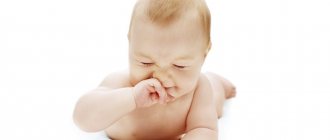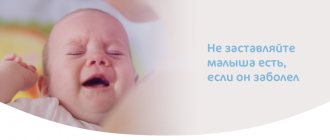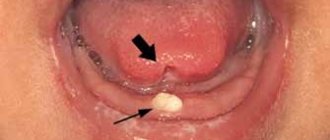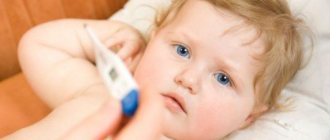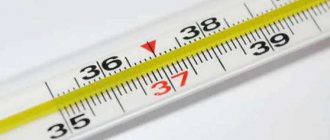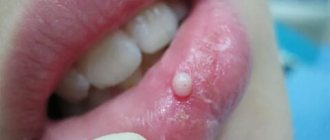You can help a child who is teething using both medicine and traditional methods. Babies experience severe discomfort and need the love and support of loving parents more than ever. The pain syndrome can be minor, so sometimes lightly massaging the gums and using teethers with cooling gel are enough to relieve symptoms. All methods are selected individually for each little patient. The eruption of teeth occurs in a certain order, so mom and dad are able to predict where inflammation and swelling are localized and direct all efforts to eliminate pain and itching.
Children's teeth
Every healthy baby eventually shows its first incisors. Their appearance obeys the laws of nature, the process is accompanied by certain symptoms, which in most cases are the same and go away in a few days. If you provide the baby with comfortable conditions and help cope with unpleasant sensations, the painful period will pass almost unnoticed.
Teething symptoms
Attentive parents can notice how the behavior of a little person changes when the first dental units appear. Panic arises from not knowing what to do when teeth are being cut, because the child often cries, and mom and dad forget about night rest and peace during the day. Other characteristic features:
- swelling of the mucous membranes and gums;
- excessive salivation;
- increase in body temperature to subfebrile levels and higher;
- a constant desire to put everything in the mouth and chew due to pain or itching;
- sleep problems;
- tearfulness, irritability or complete apathy;
- refusal of the mother's breast or bottle;
- stool disorders (diarrhea, constipation);
- redness of the throat due to increased blood flow;
- vomiting, excessive and frequent regurgitation;
- nasal congestion, cough;
- allergic rashes (in rare cases).
The listed symptoms are not always observed. Sometimes babies are not worried at all and behave as usual, so changes that have occurred can only be detected by examining the oral cavity. In the place of future dentition, white dots are visible - parts of crowns that have not fully erupted.
The emergence of fangs is often accompanied by pain in the eyes. The baby rubs them with his hands, blinks frequently, and may experience lacrimation.
Spells for tummy pain in a baby
Magic conspiracy No. 1
The ritual is performed any time the baby is bothered by abdominal pain. The person speaking crosses the baby’s tummy 3 times, then puts his palm on it and says the following words:
“I baptize God’s servant (name) with the cross, I want to relieve the pain in my tummy. Go to the little field, to your pure will, and don’t touch or disturb the baby (name). Forever and ever. Amen".
After the conspiracy, you again need to cross your tummy 3 times.
A spell that your mother or grandmother reads will definitely help
Magic plot No. 2
This plot, like the previous one, is done when a baby has a tummy ache. The speaker must take the icon of the Most Holy Theotokos, cross the child with it 3 times, then pronounce the spell words, applying the icon to the sore stomach:
“Most Holy Mary, mother of Jesus Christ, our God, you gave birth to your son, rocked him in a cradle, protected him from all pain. Place your hand on the tummy of God's baby servant (name) so that the pain disappears, goes away forever. Forever and ever. Amen".
Magic plot No. 3
The person speaking the spell needs to cross the child’s sore tummy 3 times, then bend over to him and say the spell words directly into the stomach and at the same time bite him with his lips. After the words have been spoken, you need to step back and cross yourself 3 times again:
“I bow to the sick belly of the servant of God’s child (name), I touch its pain, I bite it with strong teeth and spit over my left shoulder. There was severe pain - and there was none at all. Key, lock, tongue. Amen".
In what order are teeth cut?
Before facilitating teething in a child with the help of drugs or non-drug methods, it is necessary to understand the sequence of appearance of all units and check for any deviations from generally accepted norms. The incisors come out first, then the premolars, canines and molars. However, each person’s body is individual, so small exceptions to the rules are possible.
Some babies show crowns very early, before six months of age. For other children this happens several months later.
Experts say that by the age of 3, a baby should have 20 crowns visible. Sometimes anomalies occur: incorrect placement and curvature of the rows, as well as darkening of the enamel. A brown surface may indicate that the expectant mother took antibacterial drugs during pregnancy. A yellow-green color often indicates problems with bilirubin metabolism. Also, in some cases, such a sign indicates liver disease and the death of red blood cells (erythrocytes).
Timing of teething in children
The upper and lower central incisors are fully erupted, usually at the age of 1 year. The process begins as early as 6 months. The lateral ones grow not much later. The canines emerge on the surface of the gums before the age of two; the growth of premolars and molars can extend over a longer period.
Parents should not panic if suddenly the baby’s first front teeth appear on one of the jaws, but on the other they are cutting only on the side. At the same time, it is important not to miss serious chronic pathologies, which are also accompanied by violation of generally established deadlines. If you have doubts that everything is in order, it is better to consult a doctor. Dental specialists will advise mom and dad, conduct diagnostic tests and, if necessary, refer you to specialist doctors.
Prayers for babies' first teeth
The prayer should be read after reading the “Our Father.” The best address here would be to Saint Antipus.
Prayer to Saint Antipas:
“Oh, glorious holy martyr Antipos and quick helper to Christians in illness! I believe with all my soul and thoughts that the Lord has given you the gift of healing the sick and strengthening the weakened, for this sake I come running to you, as the blessed physician of illnesses, as the weak (or: weak) and kiss your venerable image with reverence (or: kissing) , I pray: by your intercession from the Heavenly King, ask me, who is sick (or: sick), for healing from the dental disease that depresses me: even though you are unworthy (or: unworthy) of seven to you, my most gracious father and ever-present intercessor: but you, being an imitator of God’s love for mankind, make me worthy (or: worthy) of your intercession through my conversion from evil deeds to a good life; heal the ulcers and scabs of my soul and body with the grace abundantly given to you, grant me health and salvation and good haste in everything, so that, having lived a quiet and silent life (or: having lived) in all piety and purity, I will be worthy to glorify the All-Holy Name with all the saints Father and Son and Holy Spirit, now and ever and unto ages of ages. Amen".
How to help without drugs
Medications are actively used during teething, but how to calm a child when teething using other methods? Massage prescribed by a dentist is highly effective. This way pain is eliminated by slight pressure. Another option is cooling the gums, which causes vasoconstriction (the principle is similar to the effect of ice on bruises and other injuries).
You need to massage painful areas exclusively with clean fingers. Silicone brushes are also suitable, suitable for babies six months of age and older. It is necessary to wash the accessory well and, if possible, sterilize it. Care should be taken to avoid excessive pressure. Some people are of the opinion that physical interference with the natural course of events can subsequently lead to caries and other pathological processes, but this is wrong.
Pharmacies and children's stores sell special teethers made of silicone and other soft materials that do not form jagged edges when chewed. The most effective are models with a non-uniform ribbed surface. Silicone rings with a gel-like substance inside are also used for cooling. You need to place the item in the freezer for a short time, and then give it to the baby.
Chilled complementary foods (mashed potatoes, juice, cottage cheese) will also relieve pain. A one-year-old can be offered a cool banana or apple.
Techniques
Massage the gums with your fingers (in the evening) or with a soft toothbrush (in the morning).
- Self-massage with fingers is performed with washed hands after hygienic brushing of teeth in the following sequence:
- Using light stroking movements, the pads of the index fingers of both hands move along the gum from the front teeth to the distant wisdom teeth. Repeat on each jaw 5–7 times.
- Rub the gums in a circular motion, moving along the gum from one wisdom tooth to another, gradually increasing the pressure.
- Wrap your fingers around the gum on both sides and squeeze near each tooth for 6–7 seconds, moving from the center to the far teeth.
- Complete the massage with soft strokes.
- There are several techniques for massaging your gums using a soft toothbrush:
- According to Charters. The brush is placed at the base of the teeth, massaging the enamel surface with vibrational movements up and down, capturing the edge of the gum. At the beginning of the procedure, the affected tissues are not affected.
- According to Shtilman. The brush is positioned at an angle of 45° with the bristles down, and carefully moved along the interdental spaces. During massage, not only cleaning occurs, but also increased blood flow.
- According to Bell. The brush is moved, grabbing the edge of the gum, in one direction - from the base of the teeth to the cutting edges. With slow movements, possible suppuration from the mucous membranes comes out.
- According to Fones. With the jaws closed, place the brush on the teeth at an angle of 90°. They make circular spiral movements along both rows of teeth, capturing the edge of the gums. When opening the mouth, repeat on the distal (back) side of the teeth.
- According to Hirschfeld. Pass the bristles from the neck of the teeth to the edge, capturing the edge of the gum. The direction of movement on the teeth of the lower jaw is from bottom to top, on the teeth of the upper jaw – from top to bottom.
Features of massage for periodontal disease and periodontitis
Massage for periodontal disease and periodontitis is carried out after sanitation of the oral cavity, taking into account the following features:
– gentle types of self-massage are performed with a toothbrush (according to Charters, Shtilman);
– finger massaging begins in healthy areas, gradually moving to the sick;
– after the procedure, the mouth is rinsed with a decoction of recommended herbs or a solution of tea tree oil (7-10 drops per glass of water).
To enhance the effect of the massage, applications are made - a medicinal product is applied to a cotton swab and held on the gum for 15 minutes. You can use fir oil, honey with added salt, or a mixture of 1 teaspoon of raw grated honey with the addition of 10 drops of vegetable oil.
Treatment with applications is carried out for 14 days, followed by a break.
How to help your child with medicine when teething
For some children, homemade recipes and other non-drug methods do not help. This is due to the different sensitivity and susceptibility of the body of small patients. All medications should be selected exclusively by a doctor. It is likely that the infant has a history of chronic and other diseases for which drug therapy is strictly contraindicated. Self-prescription of pharmaceutical products can lead to allergic reactions and other side effects, so it is better not to rely on reviews on the Internet and advice from other mothers. Let's look at how to help a child teething with the help of medications.
Kalgel
The combined gel has an anesthetic and anti-inflammatory effect. The active ingredient is lidocaine, that is, inflamed and swollen gums seem to be “frozen.” Sold exclusively with a doctor's prescription. It is necessary to observe the exact dosage and avoid excessive use. The effect lasts for a long time.
Kamistad
Produced in Germany. The principle is almost identical to the previous drug, but the composition contains harmless polidocanol and tincture of chamomile flowers. Herbal components help eliminate pain, itching, inflammation, swelling and redness. The composition is sweet, so the little patient will not spit it out and will be happy to open his mouth. It is often prescribed by doctors for diseases of the oral cavity.
Holisal
The gel-like substance contains choline salicylate and auxiliary components. Prescribed also for adults. Allowed for use over six months of age. It acts quickly and relieves a wide range of dental problems. This is one of the best remedies for pain relief when a child is teething badly. The disadvantage is the higher cost compared to analogues.
Dentinox
A paste based on lidocaine and chamomile extract disinfects treated surfaces of the oral cavity, relieves pain and swelling of soft tissues. Unpleasant sensations are eliminated in a short period of time, the baby sleeps soundly, does not cry for no reason, and happily eats mother's milk or an adapted formula from a bottle. Since the gel is applied externally, it is completely safe when used in moderation.
How does baby gel work?
Many dental gels during teething, due to the anesthetic they contain, do not penetrate the baby’s bloodstream and act only superficially. The anesthetic they contain helps to quickly relieve pain and alleviate the child’s condition. Also, there are gels without the inclusion of this substance, which provide an analgesic effect with other components (usually herbal). In addition, regardless of the main active ingredient, teething gels may contain other components that relieve inflammation and other symptoms in the child that are characteristic of the processes of formation and change of teeth.
Folk remedies
Medicines are effective for teething, but what should you give a child when teeth are cutting and you don’t want to use synthetic drugs? Home methods are auxiliary because they cannot always completely eliminate pain. However, for some children, these options are the most preferable and really help cope with pain. Doctors sometimes advise using:
- Compresses with chamomile. It is necessary to moisten a bandage or cotton pad in chamomile infusion and then apply it to the painful cheek. To relieve inflammation and swelling, dentists recommend giving several teaspoons of herbal tea.
- Honey. If the baby is not prone to allergic reactions, you can lubricate the inflamed mucous membranes with a honey substance. You should rub the substance in carefully, otherwise the baby will simply swallow it, and all manipulations will be useless.
- Soda solution. It is recommended to dissolve 1 tsp. soda in a glass of clean warm boiled water, dip a gauze cloth and wipe the gums. This product helps not only relieve pain, but also disinfect the surface.
Before using traditional methods, you must always consult a doctor, even if the herbal substances used are considered completely safe. Sign up for a consultation at the dental office, our specialists will recommend effective formulations that will not harm the little patient.
Conspiracies from fear
Magic conspiracy No. 1
Say words over a sleeping child at any time of the day.
“Lord Jesus Christ, Son of God, have mercy on us. Just as the damp earth does not shake, does not get scared, does not turn back, so our baby (name) will not be scared and will never shake off. Amen".
Magic plot No. 2
To say in the evening over the baby's crib:
“Across wide fields, and across wide valleys, across green meadows, and along golden sands, along fast rivers, the servant of God (name) walked.
How fast rivers overflow, how golden sands flow, how water rolls off green grass,
How to calm your baby
Many young mothers worry about what to do and how to alleviate the condition when the child is teething, because he screams loudly and cannot sleep or eat normally. The best way to help a newborn is to breastfeed frequently. During the sucking process, the baby calms down, feeling maternal protection and love.
Parents may notice that regurgitation has become a common occurrence at this time. This feature is associated with abundant salivation and is quite natural. It is important not to confuse the periodic passage of air and food with vomiting, which is dangerous to life and health due to the high risk of dehydration.
How to protect a baby from damage
Magic conspiracy No. 1
The spell against the evil eye must be done at dawn. To protect the baby from the evil eye, you should take 3 small gray stones, water and 3 spoons.
Then pour some water into the plate so that it flows by spoonfuls. You need to wash your baby with this water: wet the chest, crown, and then give him a sip to drink. After the procedure, go outside, pour out the remaining water and say 3 times:
“It came from the forest, go there, it came with the wind, it came to the wind and go away, it came from the people, it came to the people and go away.”
Magic plot No. 2
While bathing in the bathroom say:
“Grandmother Solomonida hovered, washed, and spoke conspiracies - from one they lived into another, into a single vein. So that no lessons, no supervision, and no slander will bother you. It didn’t take its own thought, and it didn’t take its own – not the lingual and not the ear, not the spot and not the heel, not the plantar and not the infraplantar. Amen".
Dental care
The oral cavity needs high-quality hygiene, even if only one incisor has erupted. At first, it is enough to wipe the crowns and gums with a cotton pad or a piece of bandage soaked in clean water (necessarily boiled). You can do this once a day for up to a year.
In one-year-old children, plaque formed from food is removed with a special silicone brush, which is placed on the finger of mom or dad. At 1.5 years old, the baby will be able to clean himself. Two-year-olds pick up the usual children's brushes with soft bristles, suitable for a certain age category.
One of the most important skills is the ability to rinse your mouth. At the age of two, a little person can already learn to do this on his own. Don’t forget about preventive visits to the pediatric dentist. The first visit is indicated at 12-14 months.
How to avoid diseases
Magic conspiracy No. 1
Magic words must be spoken over the child after he is born:
“I will get up, blessing myself, leave the house, crossing myself - I will go from the first doors to the second, from one gate to another, I will go out into an open field and go far, far to the sea-ocean. In the ocean-sea there is a white cast stone, and on it there is no alder, no blood, no tumor. So my child (name) would not have any pain, no pain, neither in the joints, nor in the veins, nor in the bones, nor in the head, nor in the brain, nor in the hot blood. Amen".
Magic plot No. 2
As in the previous plot, these words must be pronounced immediately after the birth of the baby.
“33 crows are flying, flying, carrying, carrying 33 stones. The crows sat on a hill, on a hill, under a fir tree, under a leaf, under a hot stove, under a steam bath. They took and removed any illness from the servant of God (child's name). Fly crows into an open field, go down into the blue sea, like the key to the bottom.”
When to see a doctor
When discussing what to do when teething in children, how to treat inflamed gums, parents may not notice the onset of a pathological process that is not associated with natural signs. Symptoms that do not go away within several days most likely indicate a disease that requires urgent attention to a pediatrician.
In six-month-old babies, the immunity acquired in utero decreases, and their own is only at the initial stage of its formation. The baby is vulnerable to infections and viral agents. When teeth appear, lack of sleep and other discomfort are observed, as a result of which the protective functions of the child’s body are significantly reduced.
Alarm signals:
- a sustained increase in body temperature to 39 degrees or more, antipyretic drugs do not help or show little effectiveness;
- cough with a large amount of mucus;
- persistent stomach upset;
- blood in stool;
- ulcers on the mucous membranes of the mouth;
- prolonged runny nose, purulent nasal discharge;
- constipation for more than 3 days;
- the shade of the enamel differs from the norm, there are yellow spots or other inclusions;
- the crowns are positioned incorrectly and protrude significantly beyond the boundaries of the row.
If the baby is one year old and not a single tooth has appeared, it is necessary to undergo an examination. The problem probably arose due to a lack of minerals, metabolic disorders, and thyroid disease.
Prolonged diarrhea
In most cases, such symptoms are observed for no more than two days. However, exceptions are possible when the baby suffers from diarrhea for up to a week. In this case, it is recommended to visit a therapist. Your doctor will prescribe safe and effective medications to help harden your stool.
If you leave a dangerous sign unattended and think only about how to relieve pain from teething in a child, this can lead to severe dehydration and exhaustion. The most dangerous phenomena are bloody and mucous impurities in the stool.
Temperature
When the thermometer shows 38.5 or higher temperatures that do not subside, you should definitely call a pediatrician. The body of a small person does not yet have perfect thermoregulation; such a condition is extremely dangerous and sometimes life-threatening. Only a specialist should monitor a baby with a high fever.
Persistent cough
Minor sputum production and occasional coughing are considered normal. What to do when teething in children, how to treat it, if the cough syndrome does not go away and does not allow babies to breathe, eat and rest normally? Such symptoms, along with shortness of breath and hoarse breathing, should alert mom and dad. It is likely that, against the background of a decrease in the body’s defenses, a bacterial or viral infection has occurred.
What is diarrhea
Diarrhea in a child occurs due to the introduction of a new food product.
On what principle does the protective mechanism of diarrhea work? The mucous substance produced by intestinal cells has a protective function for the body against pathogenic bacteria and viruses.
When these microorganisms enter the internal environment of the intestine, they begin to attack the intestinal walls, destroying the cells that produce protective mucus.
As a result, the human body cannot cope with the production of the required amount of mucus, and some parts of the intestine remain unprotected.
Toxins released by a virus or bacteria enter such “weakened” areas of the intestine and affect it. The human body, trying to protect itself, begins to release large amounts of water to flush out toxic substances.
Let's sum it up
The appearance of the first incisors, canines and molars is the most important stage in the life of a small person. Parents should show special care and attention during this exciting period and support the baby as much as possible. You can help a teething child with both medications and non-drug methods. The main thing is to choose an effective and safe method, taking into account the individual characteristics of the child’s body. If suspicious symptoms occur, it is important to promptly consult a doctor to exclude infectious and other pathological processes not related to the emergence of new dental units.
Instructions for use
Although different gels have individual application characteristics (permissible frequency of application, number of repeated applications), they are all used for the same purpose, in the same way. A small amount of gel is distributed over the surface of the gums, from which the child’s new teeth are erupting.
As you can see, this procedure is very simple, but even so, recommendations for the use of a particular gel for various symptoms should be taken into account. For example, using an anesthetic gel during teething, if there is no fever, is not always necessary, but this is necessary in the case when, in addition to fever, other symptoms, especially pain, are pronounced.
And remember, only your pediatrician can correctly prescribe a teething gel!

